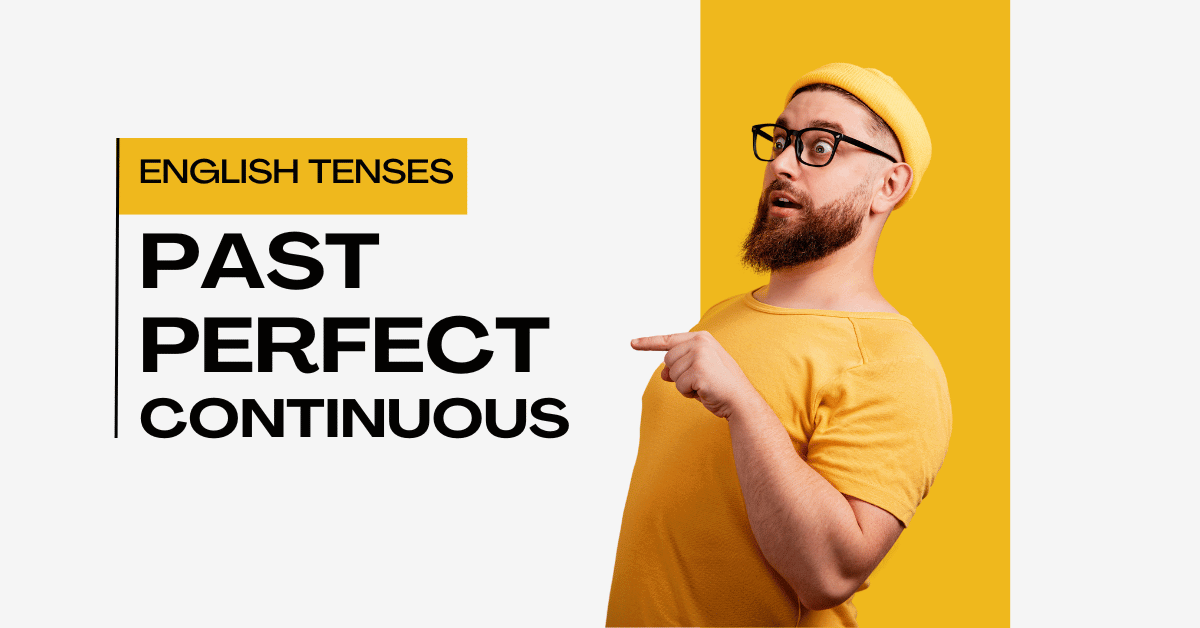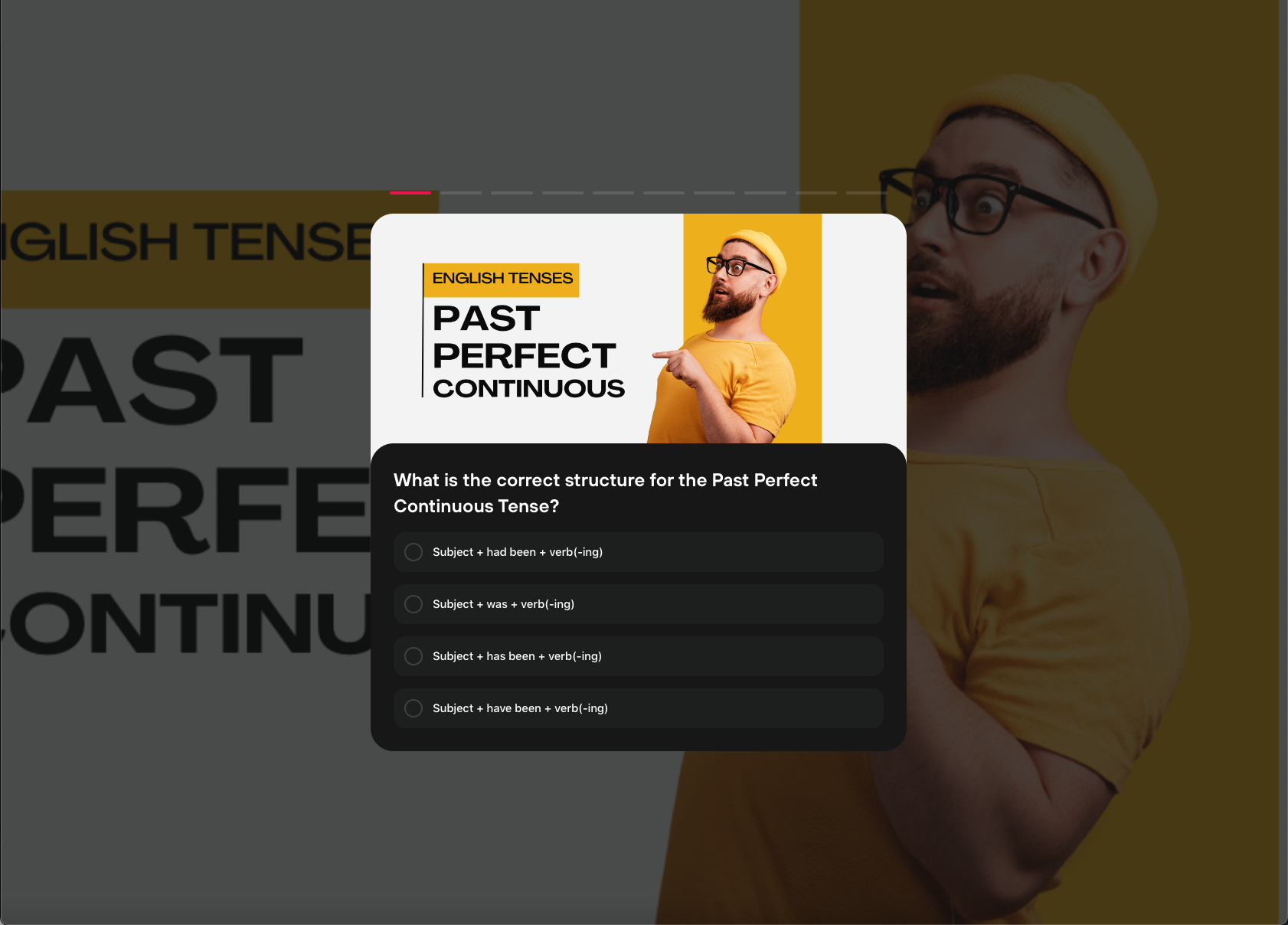Mastering the Past Perfect Continuous: A Comprehensive Guide

Mastering the Past Perfect Continuous: A Comprehensive Guide
Mastering the Past Perfect Continuous Tense: A Complete Guide
The English language can be both fascinating and challenging, and one of the more complex areas is tenses. Today, we’ll dive into the Past Perfect Continuous Tense—an essential tool for expressing actions that started in the past and continued for some time before another action occurred. If you’ve ever wondered how to explain those overlapping timeframes, this tense is your answer.
Source: Learn English Coach YouTube Channel
What is the Past Perfect Continuous Tense?
The Past Perfect Continuous Tense is used to describe an action that was ongoing in the past before another action or time. It emphasizes the duration of that earlier action, showing how long it continued before something else interrupted it.
Structure:
Subject + had been + verb(-ing)
Let’s break it down:
“Had” marks that the action is in the past.
“Been” helps form the continuous aspect.
The main verb ends in “-ing”, showing that the action was ongoing.
When Do We Use the Past Perfect Continuous?
To emphasize the duration of a past action before another past event
This tense is perfect when you want to stress how long something had been happening before another action interrupted it.
Example: By the time the meeting started, they had been waiting for over an hour.
Here, “waiting for over an hour” was an ongoing action that ended when the meeting started.
To explain a cause or reason for something in the past
Sometimes, the Past Perfect Continuous helps to explain why something happened in the past.
Example: She was tired because she had been studying all night.
The cause of her tiredness is that she had been studying for a long time before she felt tired.
To describe parallel or overlapping actions in the past
It is also used when two actions occurred simultaneously, but one lasted longer than the other.
Example: They had been talking when the phone rang.
“Talking” was happening continuously in the past until the phone interrupted.
Key Differences Between Past Perfect and Past Perfect Continuous
While both tenses deal with events before a specific point in the past, the Past Perfect Continuous emphasizes duration and ongoing actions. In contrast, the Past Perfect focuses on the completion of an action.
Past Perfect:
By the time he arrived, I had finished the book.
This sentence tells us that the action (finishing the book) was complete before he arrived.
Past Perfect Continuous:
By the time he arrived, I had been reading for hours.
Here, the action (reading) was ongoing and hadn’t necessarily ended when he arrived.
Signal Words for the Past Perfect Continuous
Certain expressions or signal words are commonly used with this tense. These include:
For (to indicate the length of time)
She had been working for three hours before the boss noticed.
Since (to indicate the starting point of the action)
They had been living there since 2015 when the earthquake hit.
By the time (to mark the interrupting event)
By the time the class ended, he had been doodling on his notebook for 30 minutes.
Examples in Everyday Conversation
Understanding this tense becomes easier when we relate it to everyday conversations. Let’s look at a few examples to see how the Past Perfect Continuous can be used in practical settings.
At work:
By the time the presentation started, we had been preparing for weeks.
In storytelling:
She had been traveling around Europe when she first met her husband.
Describing past experiences:
He had been playing football for hours before it started raining.
Each of these examples highlights the ongoing nature of the actions and their relation to another point in the past.
Common Mistakes to Avoid
Like any tense, the Past Perfect Continuous has its share of common pitfalls. Here are a few things to watch out for:
Overusing it when it’s not necessary
This tense is specific, so avoid using it when the simple past or past continuous would suffice. For example, instead of saying I had been eating when she called, you could simply say I was eating when she called.
Confusing it with the Past Perfect
Remember, if you’re emphasizing how long something had been happening, you need the continuous form. Otherwise, use the past perfect.
Mixing up time markers
Pay attention to the time markers you’re using. Since the Past Perfect Continuous always relates to another action or time in the past, signal words like before, by the time, since, and for can help clarify your sentence.
Practice Makes Perfect
Mastering the Past Perfect Continuous Tense comes down to practice. The more you expose yourself to examples and try forming sentences, the more natural it will become. Whether you’re telling a story, describing a situation, or explaining causes for past events, this tense adds depth and complexity to your language.
Conclusion
The Past Perfect Continuous Tense is a powerful tool for expressing actions that continued up until another point in the past. It allows you to add layers of meaning to your sentences by focusing on the duration and continuity of past actions. By understanding its structure, usage, and key differences from other tenses, you can confidently incorporate it into your everyday English.
FREE Quiz
Take our free quiz to test your knowledge of the Past Perfect Continuous tense.” 👉 Click Here to Start the Quiz






